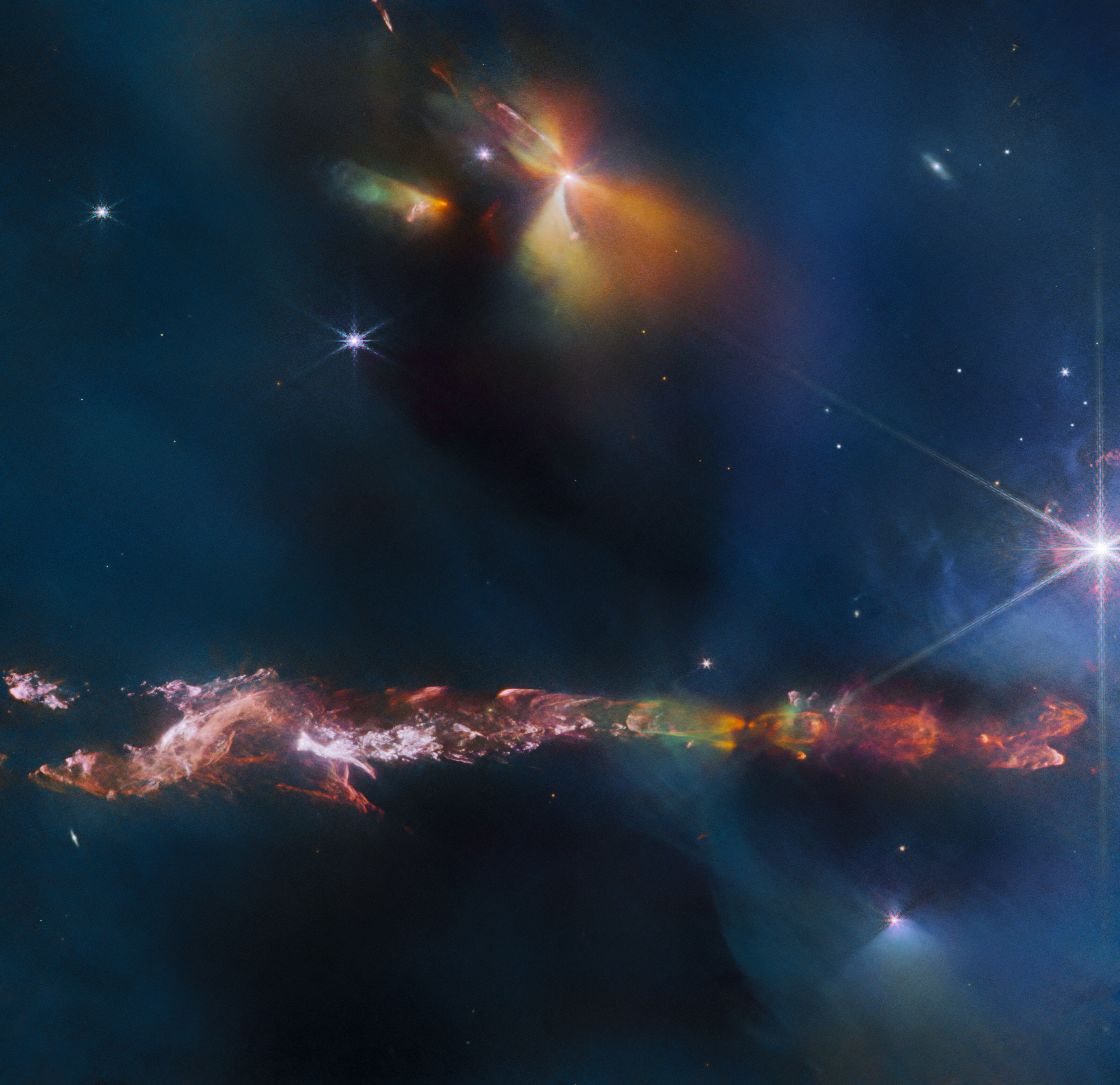JWST’s latest picture of the month is, of course, stunning – but what’s the science inside the beauty? The space telescope has snapped a protostar system called HH 797. HH stands for Herbig-Haro, and Herbig-Haro objects are the nebulous structures formed by the jets of tiny young stars.
This protostar is throwing stuff into the Perseus Dark Cloud Complex, creating a turbulent interaction full of interesting molecules that shine due to the shocks and produce this beautiful view.
Previous ground observations used redshift to understand the motions of these jets. As you can see, the left part appears to be longer than the right part. That is an optical effect: the left part is coming towards us while the right part is pointing away from us.
This was estimated by measuring how the speed of these jets changes the light emitted. Just like an ambulance’s siren pitch changes if the ambulance approaches or goes away from you (the Doppler shift), so does light. The jet coming towards us gets slightly bluer, and the one going away gets slightly redder.
However, astronomers found a different blueshift and redshift in each of the jets. The eastern edge (at the bottom of the emission) tends to be slightly red-shifted compared to the top part. At first, it was thought that the jet was rotating – but the complex motion is caused by the fact that HH-797 is not just a protostar but two.
The full picture of the month, showing other stars and protostars.
Image Credit: ESA/Webb, NASA & CSA, T. Ray (Dublin Institute for Advanced Studies)
The mechanism that produces the jets is not exactly understood. Astronomers believe that jets are caused by interactions between some of the close material surrounding the fledgling protostar and the nascent star’s strong magnetic field. As the material accumulates onto the star, some of it is ejected along its axis of rotation as two thin jets. As they encounter more and more material, they spread out, creating the structure that can be admired in many photos.
JWST and Hubble have looked at several of these fascinating young systems to better understand how stars come to be. Even recently, JWST looked at HH-211 which is located in the Perseus Molecular Cloud, just 30 arcseconds south of HH-797
The region has many young stars including the other protostar at the top of the image, showing off a completely different style of outflow compared to the Herbig-Haro objects.
Source Link: Incredible New JWST Image Looks Like Art – What Does It Actually Show?
